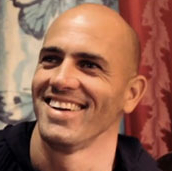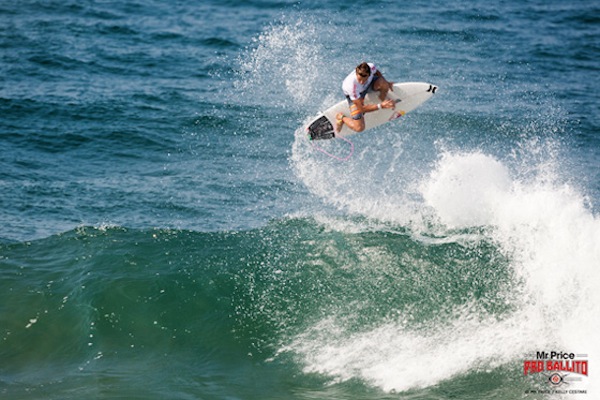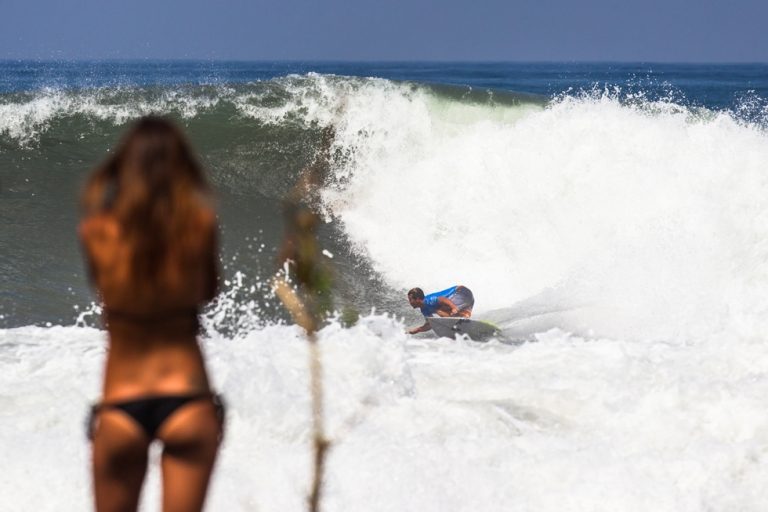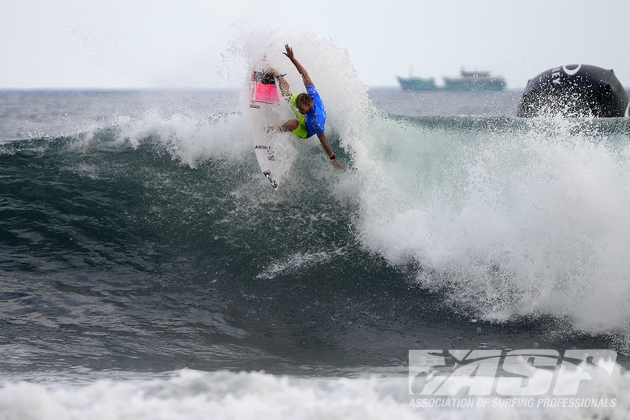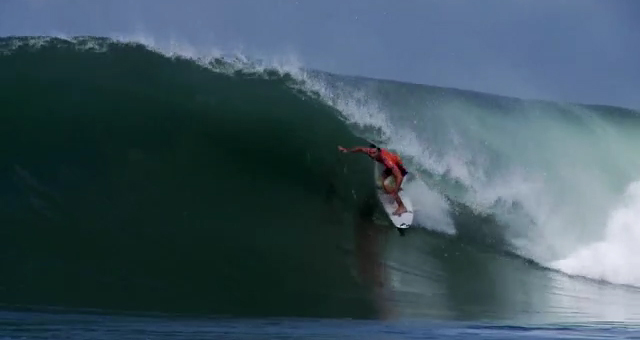I recall an old Balinese lady I encountered at the beginning of the 90s who had attempted to bar our way with three long spindly sticks. She hoped to halt us from going any further down the stony, ribbed track. Her dark eyes stared us down; her face a mix of confrontation and fear. As my friend went to open his door I gave the engine a slight rev and she was gone. I slipped the gear stick back into first and we trundled on down the track, somewhat relieved. When we arrived at the small village perched above the cliffs, I asked the local inhabitants whether they knew of the lady. The general consensus was that she was one of those crazy old bats who lived in the forest over-looking the Bukit – that we had nothing to worry about. “She must have taken you for evil spirits and wanted to chase you away” explained one lady who welcomed us into her home. 10 minutes later, out in the line-up, we’d forgotten the incident.
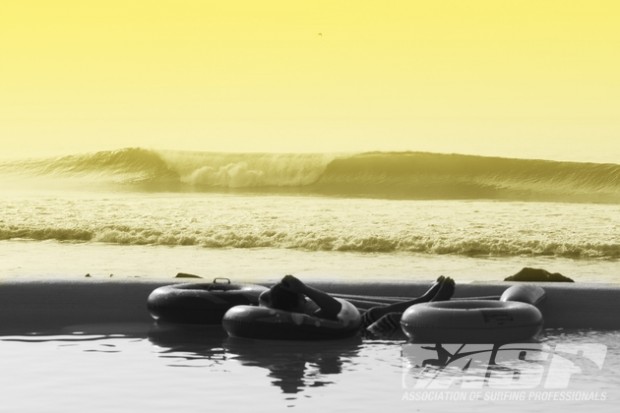
Bali and the swanky Keramas Komune Beach Resort know how to please. Photo: ASP
But a few years later, in hindsight, on another visit to Bali, it came to me that those people we often consider crazy might not be quite what we think they are. That we’re wrong to hide them away in the forest or in institutions, that they may in fact be a whole lot wiser than we imagine.
It turns out that in many ways his scrawny old lady had reason to dissuade these foreign surfboard-carrying tourists. She no doubt sensed the changes that were taking place on her island, the slow but relentless urbanisation, the weight of the mass tourism industry and all the pollution that comes with it. The challenge of managing natural resources without damaging the environment itself is fraught with complications. But it has to be said that Bali’s doing a particularly bad job of it.
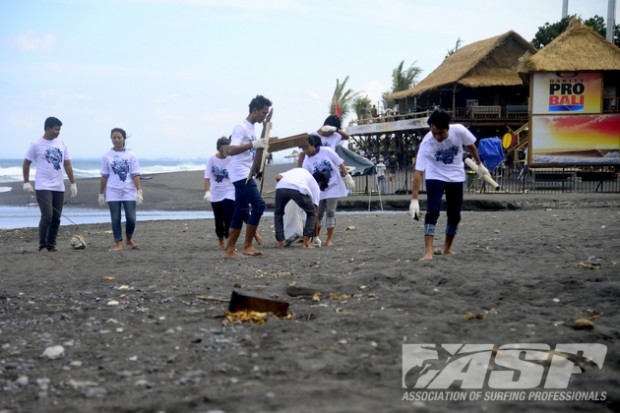
Oakley Pro Beach Clean Up. Photo: ASP
That Kelly should be openly vocal about the problem is great. Last year the 11-time champ is known to have tweeted: “If Bali doesn’t #DoSomething serious about this pollution it’ll be impossible to surf here in a few years. Worst I’ve ever seen.” The fact that the World Tour’s competition site at Keramas aims to be environmentally responsible is good too. But the real victims of this on-going pollution problem clearly aren’t the visiting surfers, the Dream Tour caravan or the thousand of Bintang guzzling spectators on the beach. Even when competitors are running into all kinds of plastic debris in the lineup and they’re complaining about it, the real victims are those locals who depend on this environment for food and water. The island has tried to find solutions in the last couple of years, but Indonesia remains Indonesia and Bali the country’s tourist trap.
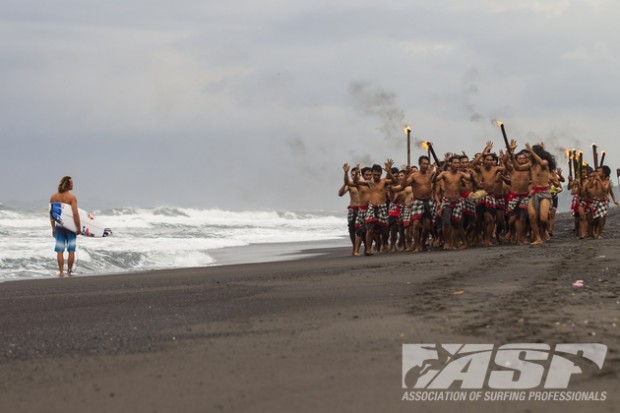
A torch-lit parade chases away evil spirits. Jordy looks on. Photo: ASP.
I caught sight of that old lady a few weeks later, one evening, she had descended to the village for the New Year festivities. She followed closely behind the Ogoh Ogoh, the papier mâché statues of monsters made to represent evil spirits, pollutants emitted from the activities of living beings, in particular humans. The following day, the day of silence, Niepy, everything grinds to a standstill. Nobody works. Nobody surfs. You won’t even see any airplanes landing or taking-off. Bali gets to rest for a few hours, attempts to cleanse and purify itself in preparation for the year ahead… but without ever really managing to get its breath back.

